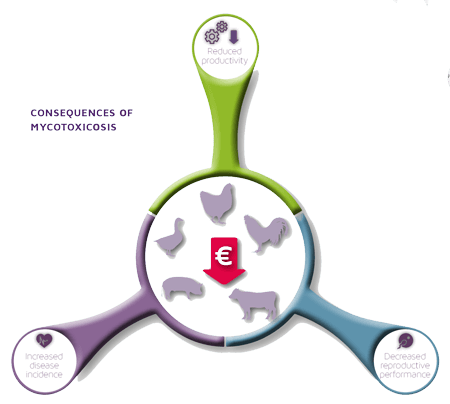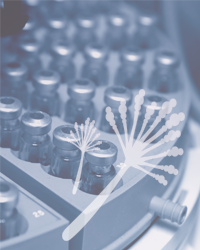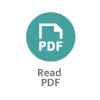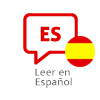Hunor Farkaš, Jog Raj, and Marko Vasiljević
PATENT CO., Mišićevo, Serbia
 What are mycotoxins and why should we control them?
What are mycotoxins and why should we control them?
Animal feed can be contaminated with microorganisms, mycotoxins, animal by-products, organic pollutants and toxic metals. This contamination has negative effects, both on animal and human health. Among these contaminants, mycotoxins are emerging as a major contaminant of feed and food.
Mycotoxins are produced as secondary metabolites by various fungi. The major fungus producing mycotoxins are:
- ⇰ Aspergillus
- ⇰ Fusarium
- ⇰ Penicillium
Mycotoxins cause mycotoxicosis and cause significant economic losses in the livestock industry due to reduced productivity, increased disease incidence and decreased reproductive performance. The mycotoxins that pose a higher threat due to their toxicity and occurrence are:
- ⇰ Aflatoxin B1 (AFB1)
- ⇰ Deoxynivalenol (DON)
- ⇰ Ochratoxin A (OTA)
- ⇰ Zearalenone (ZEA)
- ⇰ Fumonisins (FB1 and FB2)
- ⇰ T-2 toxins

 How can we detect mycotoxins?
How can we detect mycotoxins?
There are many methods available for the detection of mycotoxins. Conventional methods for mycotoxins analysis include:
- ⇰ ELISA
- ⇰ Thin-layer chromatography (TLC)
- ⇰ High-performance liquid chromatography (HPLC)
- ⇰ Gas chromatography (GC)
Most of these methods employ solid phase column clean-up of extracts and immunoaffinity techniques to remove interferences and improve the measurement of mycotoxins.
- ⇰ ELISA is a method of choice when rapid analysis is required but requires confirmatory analysis by LC-MS/MS.
- ⇰ LC-MS/MS is the most sensitive and preferred method of analysis for detecting and quantifying mycotoxins in food and feed samples.
A QUICK PEAK INTO THE LC-MS/MS BASED MULTI-MYCOTOXINS METHOD
Since it is necessary to test animal feeds for mycotoxin contamination, PATENT CO has developed and perfected a fast and simple LC-MS/MS based method for the determination and quantification of all mycotoxins (Aflatoxins B1, B2, G1, and G2; Deoxynivalenol, Zearalenone, Fumonisin B1 and B2, T-2, HT-2, and Ochratoxin A) regulated in feed (EU Directive 2002/32/ EC, 2006/576/EC and 2013/165/EU).
The method is based on “dilute and shoot” principle, which involves a two-step extraction phase and the centrifugation of the extracts.
To compensate the matrix effects* in electrospray ionization, the extracts are mixed with [13C] labelled internal standards for each group of mycotoxins (13C AB1, 13C DON, 13C ZON, 13C OTA, 13C FB1 and 13C T-2) before injection onto LC-MS/MS.
*Effect on an analytical method caused by all other components of the sample except the specific compound to be quantified.








 Micotoxicosis prevention
Micotoxicosis prevention